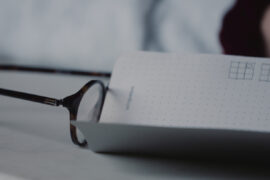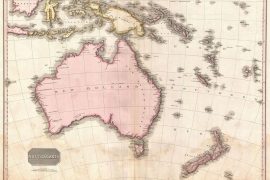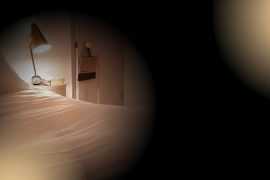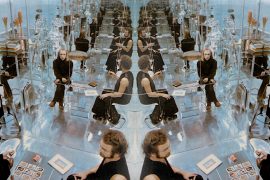One of the methods we use to teach first year students to think about drawing differently (context: I teach drawing and printmaking when I’m not making and researching new forms of literature) is to use negative space in order to draw. To look at what’s not there as much as they do at the object they’re drawing. What this teaches them (hopefully) is that the space around a form is as important as the form itself. The unspace, so to speak, between the architecture of a building and its surroundings illuminates aspects of the relationship between each piece of steel, concrete, and glass and the people moving through that space.
That’s been on my mind this week as we prepare the final elements of our second experiment in Ambient Literature. Yesterday you’re still dreaming is a short, focused piece of research-by-practice; an intervention into the overall programme of work in order to answer a specific question that’s arisen from our discussions. As I write, the score and voice tracks are being mixed into a final, audience-ready version, and we’re taking bookings for the two-day run of the work this weekend. That preparation also addresses the manner by which our audience — each reader — encounters the work. If this were a conventional book, then that first encounter would likely comprise the book jacket, designed and composed in order to attract and prepare a reader. That jacket might have been encountered in a bookshop, where it would have been placed in a genre section, or highlighted alongside “staff picks,” or “new books in,” maybe in a “recently reviewed” section. Regardless, the reader would have a context by which to approach the work. They’d not come to the book cold, without any knowledge of the myriad ways in which the object is addressing them.
That isn’t the case with experiment ii though. Much of that readerly preparation doesn’t apply in this context or, if it does at all, has to be considered very differently. Our readers have pre-booked, and have a sense of what to expect. If they know our work (Yesterday you’re still dreaming is presented as a piece by Circumstance) then they’ll be prepared in terms of the mood we usually present, and the combination of text and audio we’ve employed in the past. What we can’t know though, is what they’re really expecting, anticipating. The title is deliberately ambiguous. The text on the website describes “a narrative form within which the fabric of the city itself becomes part of the fictional space. The story is around you, and the phone in your hand becomes the vehicle for a new kind of story, somewhere between listening and performing.” That’s not especially precise, but is intended to frame expectation in an equivalent manner, as would the length of a book or its format (hardback, paperback, the specific kind of binding and design, etc.). We’re not managing expectation as much as we’re preparing you for the kind of story experience you’ll encounter. The choice of words is specific and acts as a kind of metadata attached to the work.
I’ve been thinking about Ambient Literature in terms of how it corresponds to a photographic negative too. A negative, mechanically speaking, is the source of a positive image. It is a record of the world as the camera mechanism records it, as the chemical process for recording generates a picture from light. Conceptually though, could a negative be thought of as the source of a story at its component level? experiment ii comprises an audio track (which in turn has voice, music, some sound effects and audio processing), a phone, and a physical object (if I describe this I’ll give things away, so I’ll leave it ambiguous for now). These are the elements that provide the scaffold for the story, but they’re not the story itself. They’re the equivalent of the binding, pages, cover, and type that a book uses to present a fiction. The moments of story itself though, of what George Steiner described as the detonations in a reader’s head, are enabled by those constituent parts and translated by each reader from a negative, potential state, into a positive, storied moment.
For Ambient Literature, and the projects and experiments in particular, I’m wondering whether considering the “photographic negative” of the work might help as we invite an audience for each work. Whether these might become repeatable, robust elements equivalent to binding, paper, and typography will have to be seen. They won’t necessarily comprise the same forms (audio, for example), but the job they do and the way we describe them ought to, I think, be a useful foundation.
-Tom Abba








Comments are closed.